Should Breweries Make Non-Alcoholic Beer?
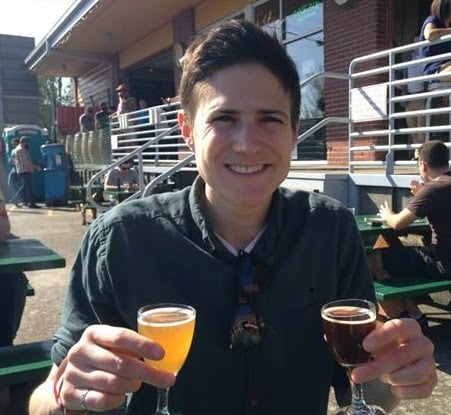
November 22, 2022
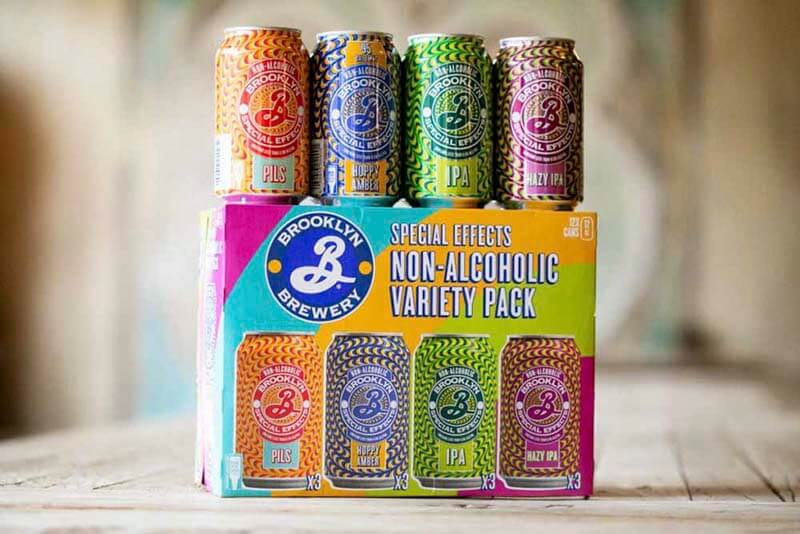
A few years ago, a beer without alcohol in the United States seemed crazy. But today, non-alcoholic beer has become a growing trend in the U.S. So much so that many American craft breweries have taken a stab at making their own versions of non-alcoholic beer.
Beverage e-commerce site Drizly reported that NA category shares rose twenty-four percent on the platform year over year compared to the same period in 2021. More than one hundred non-alcoholic brands including beer, wine, cider, and spirits now live on Drizly, a seventy percent increase from last year. In the United States specifically, Statista reported that non-alcoholic brands contributed to over $414 million in sales.
While on a global scale, leading global alcohol industry market research firm IWSR reported in its IWSR Drinks Market Analysis that volume of no- or low-alcohol beverages grew by thirty-one percent year over year in 2022.
Basically, all signs point to non-alcoholic beer trending, if not growing into something more.
As a result, over the past few years, many craft breweries have added innovative, flavorful non-alcoholic beers to their portfolios. And entirely non-alcoholic beer brands are emerging in the market.
For instance, major established brands like Brooklyn Brewery, Boston Beer Co., and Dogfish Head have all crafted their own NA beers.
And solely non-alcoholic beer producers such as Athletic Brewing Co. are changing the status quo.
We predict this beer trend will continue to grow and that soon Americans will be drinking non-alcoholic beer all year round. So now the big question becomes: Is it worth your brewery investigating and investing in starting a non-alcoholic beer line?
What We’ll Cover in This Piece:
- What Is Non-Alcoholic Beer?
- Who Drinks Non-Alcoholic Beer?
- How Do You Make Non-Alcoholic Beer?
- Why Are Non-Alcoholic Beers Popular Now?
- One of the Most Successful Non-Alcoholic Beer Makers in the United States
- Why Three Big Craft Breweries Started Successful Non-Alcoholic Beer Brands
- What Does the Future Look Like for Non-Alcoholic Beer?
What Is Non-Alcoholic Beer?

Alcohol-free beers are those that have 0.0% ABV. But non-alcoholic beers in the United States are those that fall under 0.5% ABV. So yes, technically some NA beers can still have a very small percentage of alcohol. But, you’d probably have to drink around nine bottles of alcohol-free beer to equal the ABV kick of a single standard beer. And the amount of alcohol in an NA beer is about the same amount that you’d find in an overripe banana.
For that reason, the category has been growing. This is especially true amongst Millennials and now Generation Z. Many who seem to be particularly interested in a better-for-you, sober-curious lifestyle.
Who Drinks Non-Alcoholic Beer?
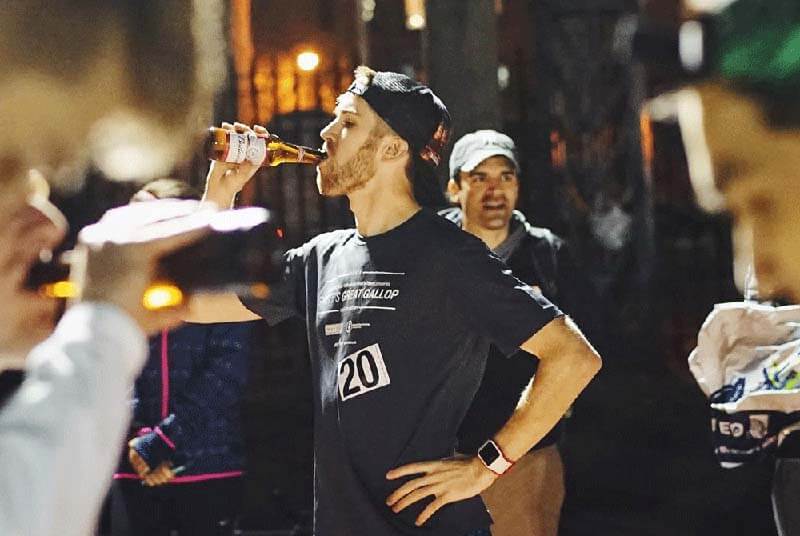
For the most part, this trend was driven mostly by Millennials in the beginning with Generation Z consumers picking up the thread now in droves.
Drizly’s 2022 Consumer Trend Report found that thirty-eight percent of Gen Z and twenty-five percent of Millennial drinkers reported giving non-alcoholic versions of beverages a try in place of their alcoholic brethren.
“The stigma around who drinks NA beverages is fading and Gen Zs and Millennials are leading the way,” says Deborah Coleman, co-founder and head of sales and marketing at Canada-based Libra Non-Alcoholic Craft Beer, in a piece for Hop Culture. “We’re seeing younger consumers embracing the non-alcoholic beverage movement."
If your brewery attracts a large demographic of Millenial or Gen Z consumer,s then it may be worth offering non-alcoholic options.
How Do You Make Non-Alcoholic Beer?
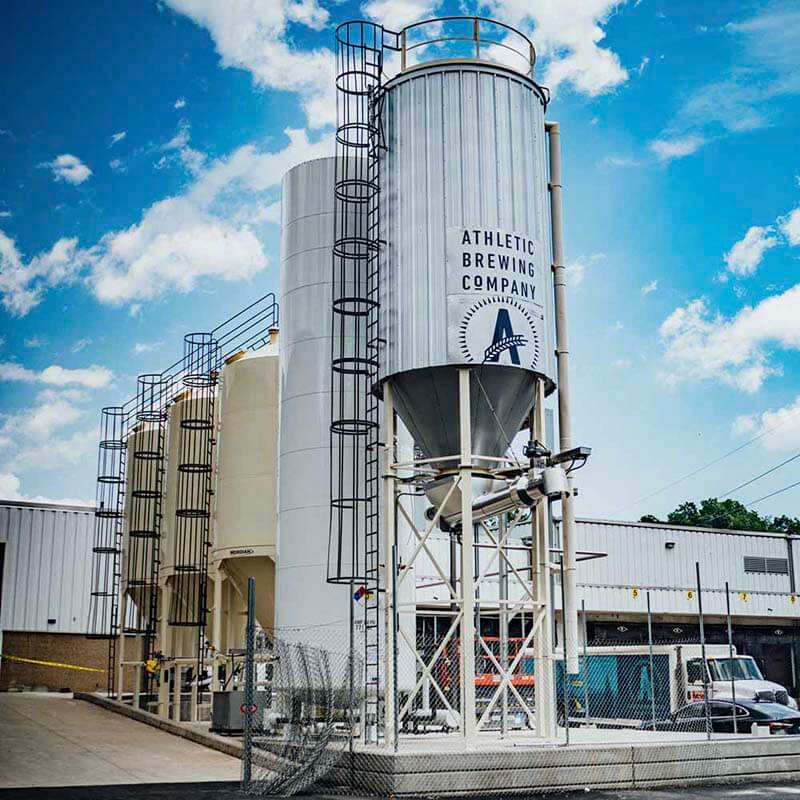
Overall, there are two main methods to make non-alcoholic beer. One can prevent the formation of alcohol during fermentation while the other can strip alcohol out from a fully brewed, alcoholic beer.
Limited or Arrested Fermentation
From the introduction of non-alcoholic beer to the market in 1979 to the mid-2000s, brewers primarily made non-alcoholic beer through the former, a process called arrested fermentation.
In this approach, brewers tweak the temperature and sugar level of the wort, ensuring it has less fermentable sugars. That way, when fermentation occurs, the yeast has less fermentable sugar to eat, producing less alcohol.
Another approach is to quickly cool the fermenting beer to almost freezing temperatures. This process deactivates or “kills” the yeast before it can create high amounts of alcohol.
Limited or arrested fermentation is a fairly simple method but can also affect the final flavor of the beer.
In the past, stopping the fermentation process before it produced too much alcohol, while effective, often resulted in bland, flavorless products. Hence why the non-alcoholic beer industry had such a bad reputation for such a long time in America.
Over the past decade though, brewers have experimented with additional methods of making non-alcoholic beer that have vastly improved the quality.
For one, using specialized yeast. These strains for non-alcoholic beer production have been specifically designed so they do not ferment certain sugars such as maltose. Best of all, they still impart a great flavor on the wort, so brewers can use this arrested fermentation method while still creating a flavorful product.
Dealcoholization
The latter method of making non-alcoholic beer includes stripping a fully brewed beer of its alcohol content.
Most dealcoholization methods ensure a fuller-flavored, higher-quality non-alcoholic beer, but they also require specialized equipment that will add an upfront cost to your process of making non-alcoholic beer.
Here are some of the most common methods of dealcoholization:
Boil Off Method
Some producers heat uncarbonated beer to its boiling point and allow the alcohol to evaporate. Since alcohol has a lower boiling point than water, brewers can simply heat up the fermented beer until they’ve burned off the desired amount of alcohol.
This is a simple method but can affect the flavor and aroma of your non-alcoholic beer.
Membrane Filtration
The membrane method, on the other hand, does a better job of retaining color, flavor, and aroma. In this process, brewers run beer through a membrane that separates out the alcohol. It’s another common method that removes water from the beer, distills off the alcohol, and then returns the water to the beer.
The membrane filtration ensures a full-flavored non-alcoholic beer.
Vacuum Distillation
Similarly, vacuum distillation keeps the taste and texture of the beer intact. Essentially with this method, the beer goes inside a vacuum chamber, reducing a fermented beer’s boiling point from around 173.1°F to 93.2°F.
By lowering the boiling point, brewers can distill alcohol off of the beer without scorching the product and potentially burning off key flavor and aroma compounds.
Reverse Osmosis
This is one more method of note that requires a special piece of equipment called a dealcoholizer. With reverse osmosis, beer passes through a semipermeable membrane under high-pressure conditions, stripping the fermented wort of water and alcohol while retaining those crucial flavor and aroma molecules.
Afterwards, the non-alcoholic beer goes through another step called diafiltration, which adds deaerated water to the product, before being diluted with more water to reach that final ABV level.
Proprietary Methods
Lastly, some breweries even have their own proprietary methods for making non-alcoholic beer. Such as Brooklyn Brewery that “uses a process that prevents alcohol from being created in the first place while still allowing many of the flavors we associate with beer to still develop,” says Eric Ottoway, CEO at Brooklyn Brewery that developed its own line of non-alcoholic beers called Special Effects after about a year and a half of trials.
Again, while these methods often result in better beer, they have their own drawbacks, including the cost of equipment.
No matter the process though, the goal is to create a beer that tastes like beer…just without an alcohol content above 0.5% ABV.
And it seems to be working.
Why Are Non-Alcoholic Beers Popular Now?
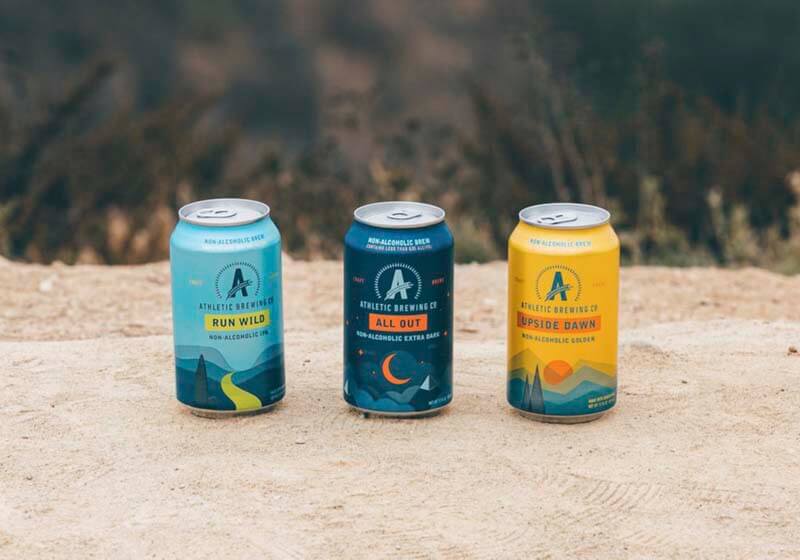
Despite a rocky start, non-alcoholic beer has started to experience a cultural shift in America. Again, pushed forward by Millennials and Gen Zers who desire to live a healthier lifestyle.
According to a poll from Morning Consult and YouGov, fifteen percent of Americans reported they abstained from alcohol in January 2021. Taking a break from booze in the first month of the year has become known as Dry January, a term first coined by a group in London in 2013.
But overall, even outside of January, Americans have been embracing a “sober-curious” movement. One that includes cutting back on alcohol consumption.
As a result, non-alcoholic beer has become a great option for folks looking to dial back their drinking. Or those aiming for a healthier alternative.
And American brands have noticed, especially those solely dedicated to producing non-alcoholic beer.
One of the Most Successful Non-Alcoholic Beer Makers in the United States
In the United States, much of the early interest in NA beers was inspired—and captured—by Athletic Brewing Company.
Founded in 2017 and launched in 2018 by Bill Shufelt and John Walker, the company recently announced a $50 million investment from Keurig Dr Pepper, making the soft drink giant a minority equity stakeholder in the non-alcoholic brewery.
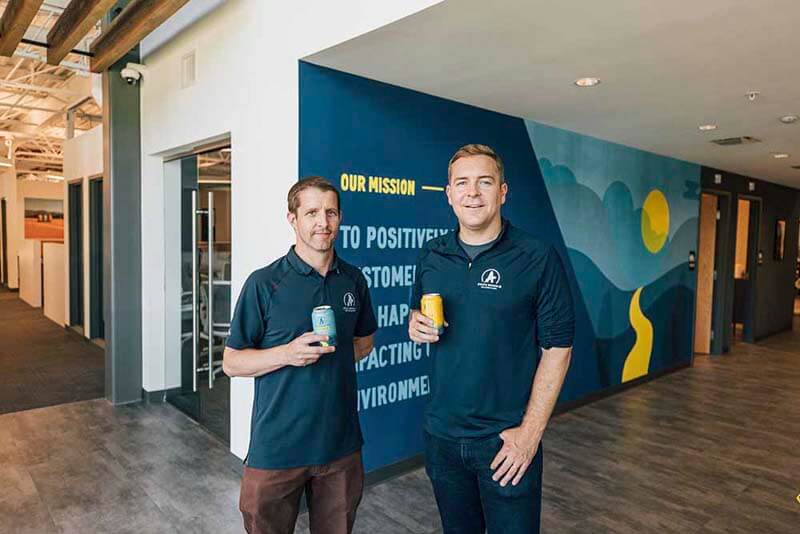
That’s on top of a $50 million Series C funding round led by Alliance Consumer Growth and existing investor TRB Advisors completed in June 2021.
That same year, the company produced 105,000 barrels of non-alcoholic beer, enough to make it the twenty-seventh largest craft brewery in the United States—all without producing a single drop of alcohol.
“We came into a category that was dormant for thirty years,” says Bill Shufelt, co-founder and CEO of Athletic Brewing Company. “The metaphorical boulder was standing still and it took a lot of pushing to really get the category going.”
Shufelt credits much of Athletic’s success to three things.
For one, the company approached the non-alcoholic category with a craft beer mentality, using new production methods to make tastier products.
“We entered a category that had been hiding in plain sight with maybe the most boring options in the whole grocery store,” says Shufelt. “There hadn’t been a thought of innovation in a quarter century.”
As a result, Athletic Brewing has a diverse lineup of offerings, from its flagship Run Wild IPA to its All Out Stout to more creative one-offs such as Thai IPA with Coconut and Athletic ESB. And they’re all alcohol-free.
Another key piece of Athletic’s success was that they spent on marketing. And the final piece of the puzzle was distribution. Because non-alcoholic beer isn’t limited by the same three-tier distribution system as its alcoholic counterparts, it can be shipped direct-to-consumer much more liberally. Athletic took full advantage of this by establishing the first true e-commerce brewery and putting a production facility in Connecticut, right near a massive UPS hub.
In 2021, Athletic Brewing outgrew its 10,000-barrel space in Connecticut, opening a new facility in a former Ballast Point space in San Diego, CA.
But even major craft breweries have decided to get into the non-alcoholic beer game.
Why Three Big Craft Breweries Started Successful Non-Alcoholic Beer Brands
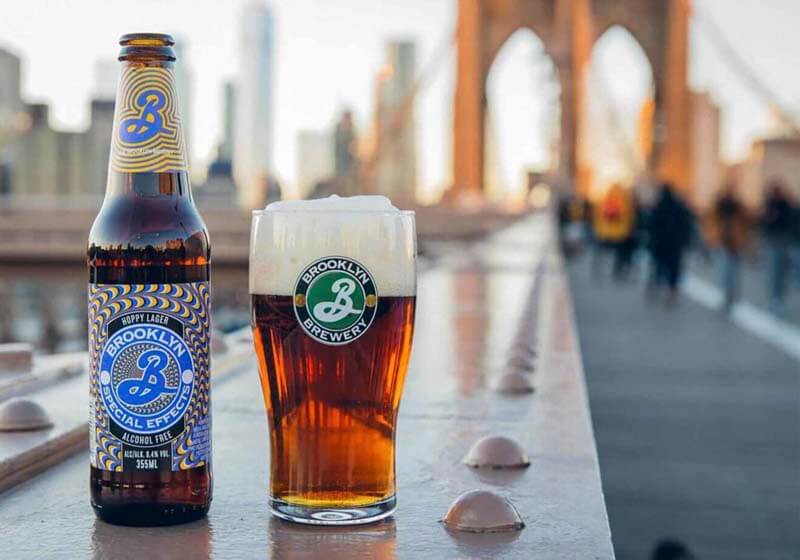
One of the first to release a non-alcoholic line here in the United States, Brooklyn Brewery set the tone for the potential of the NA category.
Ottoway says spending time doing business in Europe while experiencing the normal culture of drinking non-alcoholic beer inspired his team.
“Going to after-work drinks with colleagues, they would either go home, drop off the car, and meet you for drinks, or they would come to the bar with you and drink non-alcoholic beer. And nobody seemed to think that was abnormal,” says Ottoway. “We saw an opportunity to give craft beer fans an opportunity to enjoy the taste and flavor they love without the alcohol.”
Brooklyn Brewery debuted Special Effects in Sweden on Dec. 1st, 2018. The hoppy lager contained just 0.4% ABV but a huge flavor from a blend of pale, caramel, and dark roasted Munich malts. Plus, an intense hop character from dry-hopping with Mosaic, Citra, and Amarillo hops.
“Our goal is for Special Effects to allow you to do more without having to compromise,” says Ottoway, who notes that Brooklyn Brewery’s NA beers globally are now north of fourteen percent of the brewery’s sales. “It used to be that flavor came with alcohol, so enjoying one meant having to deal with the other. That’s great for many occasions, but when you don’t want alcohol to be part of the equation, we want to give you the opportunity to still enjoy your favorite beverage. Do more, your way, on more occasions. Now you can have your beer and drink it too.”
It’s a philosophy other major brands have picked up on.
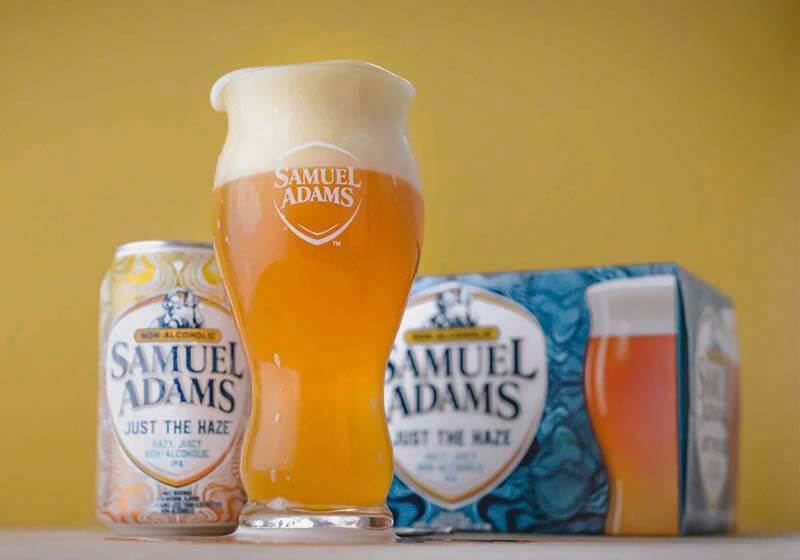
Boston Beer Company launched Samuel Adams NA beer Just The Haze at the end of 2020 after two years of development. The non-alcoholic hazy IPA gives consumers transparency and allows them to drink one or two during the day without feeling guilty.
“We see Just The Haze as fitting into a beer drinker’s life as a pacer beer, not sacrificing flavor or experience during a beer-drinking occasion,” says Jim Koch, founder of Boston Beer Company. “It is a triumph of brewing technology and the brewer’s art… We’re defying the expectations and preconceived notions that come with yesterday’s non-alcoholic beer.”
Pretty popular, Just the Haze actually picked up a gold medal in the “Non-Alcohol Beer” category at last month’s 2022 Great American Beer Festival Awards ceremony.
Similarly, last May, Dogfish Head released its non-alcoholic wheat beer, Lemon Quest. Billed as a refreshing, active lifestyle-oriented, non-alcoholic alternative, Lemon Quest has real lemon puree, blueberry juice, acai berries, monk fruit, sea salt, and Hopsteiner Polyphenol-Rich Hop Pellets™. The beer clocks in at only 0.5% ABV and ninety calories per 12oz can.
What Does the Future Look Like for Non-Alcoholic Beer?
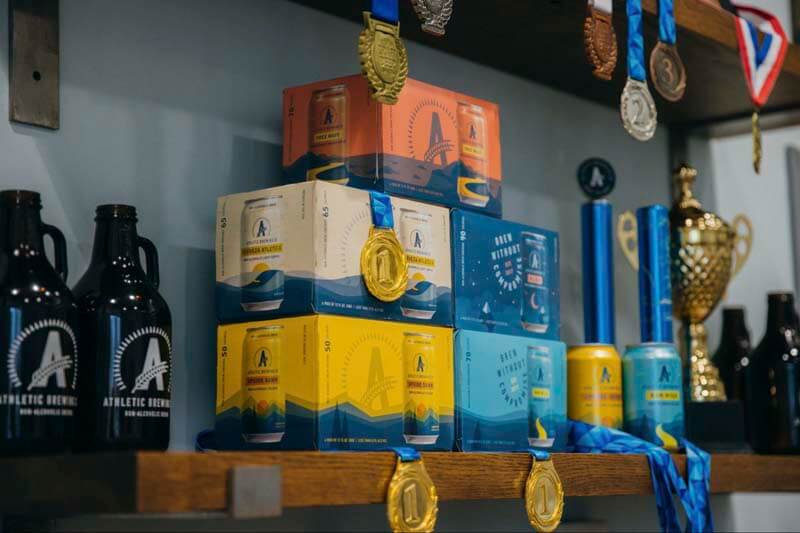
With solely NA breweries like Athletic leading the way (and racking up awards), the future for non-alcoholic beer looks golden.
Add that to the fact that even major alcohol-based breweries such as Brooklyn Brewery, Boston Beer Company (nabbing their own awards), and Dogfish Head have all added NA beers to their own portfolios, and you have a potent case for success.
Much like craft beer itself, the future of non-alcoholic beer comes down to one word: innovation.
Breweries focused solely on non-alcoholic beers continue to expand their portfolios. We’ve seen styles of NA beer that include hazy IPAs, pale ales, blonde ales, wheat ales, kölschs, stouts, adjunct stouts, porters, and more.
For instance, Athletic Brewing itself has over twenty offerings listed on its website from the flagship award-winning Run Wild IPA, Upside Dawn golden, Free Wave IPA, and All Out extra dark to limited-edition varieties like the Soul Sour, Trailblazer Hoppy Helles, and Superfood Swell, a tropical IPA collab with superfood pioneer Laird Superfood®.
With plenty of non-alcoholic beers out in the market to try, we expect that NA beer is not just another trend. But rather a serious shift in the craft beer industry that will cause ripples for years to come.
If you’re looking to push some chips into the middle of the proverbial non-alcohol beer table, now might be the right time to cash in.
Improve Your Brewery Production
Ollie is the affordable, easy-to-use software to manage your brewery and operations. See why breweries like yours are making the switch.
